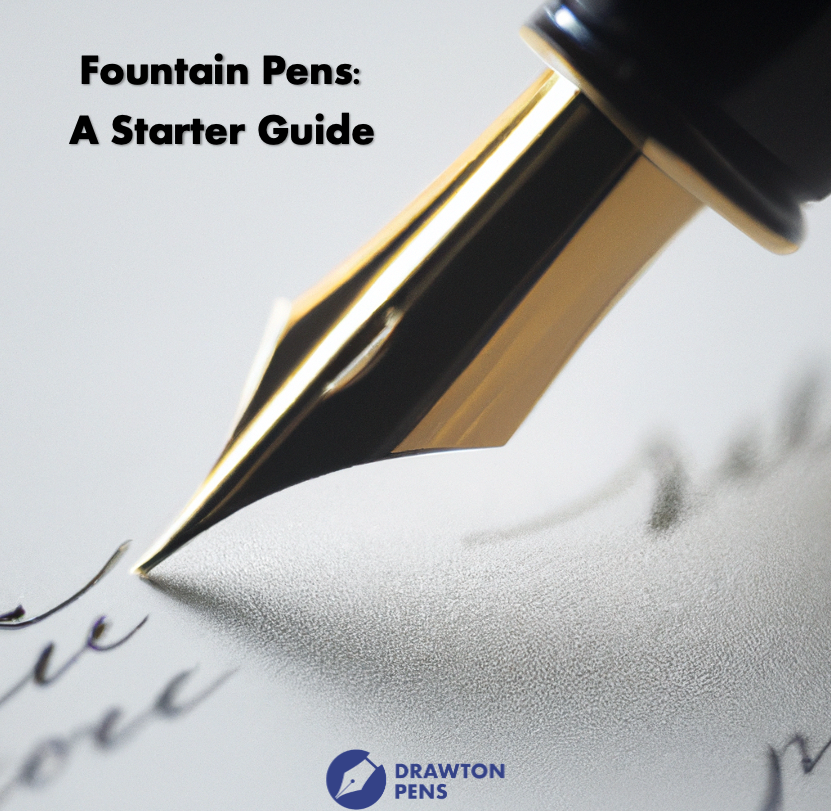Fountain pens offer a unique and enjoyable writing experience, but for beginners, they can seem a bit intimidating. With the right guidance, however, you can quickly adapt to using fountain pens and discover the joys of fine writing. This starter guide will walk you through the essential steps and tips for getting started with fountain pens.
1. Choosing Your First Fountain Pen:
- Start with an affordable, beginner-friendly fountain pen. Some popular options include the Lamy Safari, Pilot Metropolitan, or Platinum Preppy.
- Consider the nib size. Fine nibs are great for small handwriting, while broader nibs are better for those who prefer bolder lines.
2. Understanding Fountain Pen Components:
- Nib: The tip of the pen that touches the paper.
- Feed: The part that controls the flow of ink to the nib.
- Converter or Cartridge: These hold the ink. Converters are reusable, while cartridges are disposable.
- Barrel: The pen's body, which houses the ink reservoir.
- Cap: Protects the nib and prevents the pen from drying out.
3. Preparing Your Fountain Pen:
- If your pen uses a converter, attach it by following the manufacturer's instructions. If it uses a cartridge, insert it as directed.
- Gently shake the pen to help the ink flow to the nib.
- Make sure the pen is capped when not in use to prevent it from drying out.
4. Holding the Fountain Pen:
- Hold the pen so that it rests on your first finger and is supported by your thumb and middle finger.
- Experiment with your grip until you find a comfortable and natural position.
5. Writing Tips:
- Apply minimal pressure. Fountain pens write best when you let the weight of the pen do the work.
- Experiment with the angle and position of the pen to find the sweet spot for smooth writing.
- Try different paper types to see which works best with your fountain pen. High-quality, smooth paper usually provides the best results.
6. Maintenance:
- Clean your fountain pen regularly, especially when changing ink colors or if it's been sitting unused for a while.
- Flushing the pen with water is the most common cleaning method. Follow your pen's instructions for disassembly if needed.
- Don't forget to cap your pen when not in use to prevent drying.
7. Inks and Refills:
- Fountain pens offer a wide variety of ink colors and properties. Explore different ink options to find what you prefer.
- Refill cartridges or converters with your choice of ink.
8. Troubleshooting:
- If you experience issues with ink flow, check for clogs or dried ink in the nib or feed. A thorough cleaning can often resolve these problems.
9. Practice:
- Writing with a fountain pen may take some getting used to. Practice is key to improving your writing and comfort with the pen.
10. Explore and Enjoy:
- As you become more comfortable with your fountain pen, you can start exploring different nib sizes, pen brands, and inks to find what suits your style and preferences.
Remember, using a fountain pen is a skill that improves with time and practice. The journey is as enjoyable as the destination, so don't be discouraged by initial challenges. Embrace the process and relish the unique experience that fountain pens offer. Happy writing!

